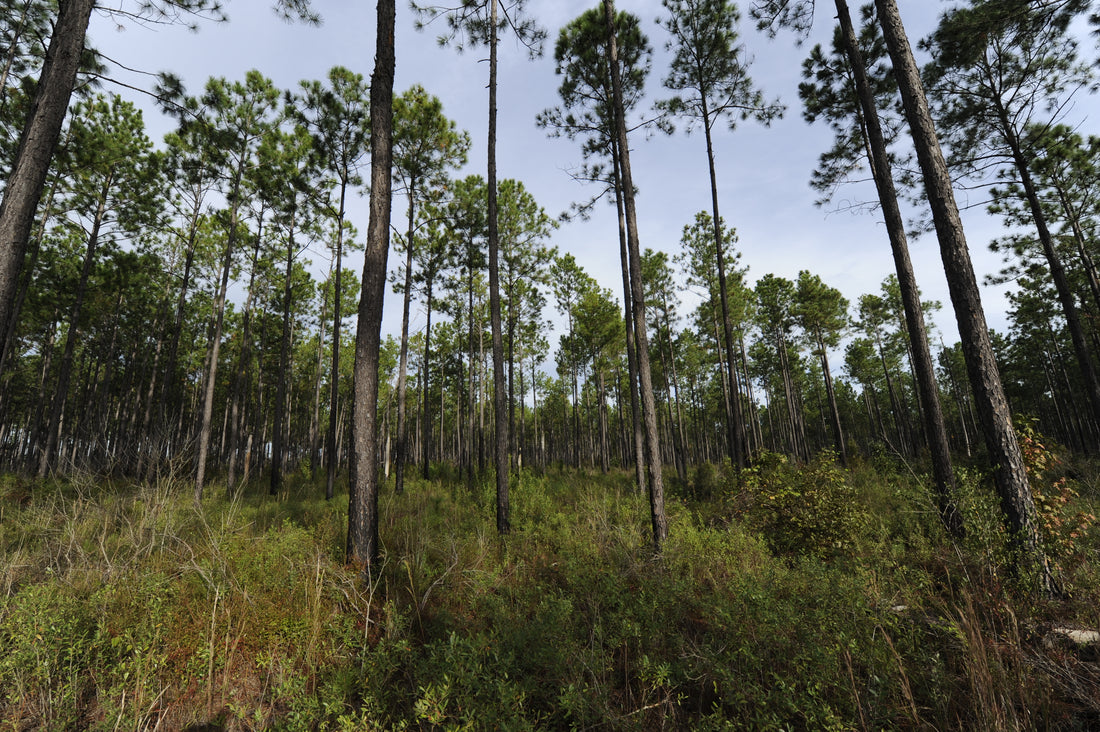
The old proverb “you can’t see the forest for the trees” speaks to getting lost in the details and failing to see the big picture. It’s fitting when I think about the classic perception of forests as the least likely place to find bees. When I was in my graduate studies and early in my career I was often reminded by seniors in the field that you don’t find bees in forests. Forests are full of bees, even the boreal forests that supply softwood for our paper. So why is it that we sometimes can’t see the forest as a place for the bees?
First, let’s think about what pollination is. We all know the word, and probably know the system somewhat, but a refresher is always good. Pollination is the movement of a pollen grain (the male gamete – if we were to compare it to us mammals, that’s the sperm), to the egg (same word for the female gamete for us mammals) so that a seed can be produced. And yes, a seed is a little baby plant. If you haven’t noticed, with the exception of a few strange species, plants can’t move, so getting that pollen from A to B is a challenge. That’s where the pollinators come in. These animals move pollen for the plants.
But, on the pollination biology side of things softwood trees or cone-bearing trees, known as gymnosperms, don’t require animals for their pollination. They are wind pollinated. So yes, these trees don’t need bees, but these trees aren’t the only plants in a healthy forest ecosystem. Forests have diverse understory vegetation – pretty much all of these plants need pollinators to reproduce – the technical term for these plants is angiosperms, the less technical one is flowering plants. When there is a flower there is a pollinator. If we think of the forest as more than just tall trees we’ll see that they are indeed for the bees. In fact, without bees, forests have less food for other animals and less animals in general. Not only less bees, but less birds, less deer, etc.
I’ve had the opportunity to actually study these systems to see what happens. My research of forest ecosystems showed that not only did these ecosystems benefit from bees, but the bees benefited from them. My research partners and I used some really cool techniques called bagging, or pollinator exclusion experiments. Its sounds exactly like what it is, putting a bag over a flower so that a pollinator can’t visit it, and then seeing what happens. Most of the plants that we studied produced little to no fruit without pollination – they were pollinator dependent. We also mapped out the number and density of plants in the forests, and monitored the bee population. Then we compared our data to the data that the local wildlife agency had on deer. In places with more bees, and more flowers, there were more deer, the deer were bigger, and mother deer nursed their fawns longer. Bees support so many levels of ecosystem functions.
How do pollinators and paper go together?
So is there such a thing a pollinator-friendly paper? Do pollinators really care about what you are writing notes on? Sustainable paper, from forests that are healthy and diverse ecosystems, supports pollinators, supports plants, and supports wildlife. Yes indeed. But still, what about that bees that don’t live in forests? How are forests important to them? We’re all impacted by direct and indirect forces, and one of those big indirect forces is climate change. Forests play a huge role in carbon mitigation. Pollinators are hugely impacted by climate change – disproportionately so. They are the climate refugees of the animal world. Healthy forests are carbon sinks, and they help buffer the impacts.
When I think about bees and other pollinators, one thought leads to another, and to another, as pollinators are connected to so many systems. They bring us one in three bites of food we eat and pollinate 85% of the terrestrial plant species. Bees pollinate plants that give us raw materials: textile fibers, ingredients for industrial process, hardwood for construction, chemicals, pharmaceuticals, and medicines. Forests are complete ecosystems that are pollinator dependent. Forests are supported by bees; forests support bees, and all of us. When we look at anything in our world, manufactured or organic, we should see it for the bees.

Some of that research data: Cumulative pollinator dependence of key wildlife and honey bee food species as determined through bagging experiments and resultant percent fruit development showing mean fruiting measures from a 2-year sample period – data based on 590 individual measures.
-- Written by Vicki Wojcik
Banner photo by Stephen Buchmann
---------------------------------------------

Vicki has been working in pollinator conservation for over a decade; it all started after taking the Apiculture course at Guelph during her undergrad. Honey bees turned her on to wild bees, and wild bees turned her on to city bees. She completed a Ph.D. in urban ecology at UC Berkeley, focusing on how urban habitats are used by pollinators. Her professional work post-grad focused on agroecosystems and other modified landscape. Bees are everywhere, so if there is a landscape with bees she’s interested in finding out more. Vicki is the Director of Pollinator Partnership Canada, an ENGO dedicated to promoting pollinators and their life-sustaining ecosystem functions.

